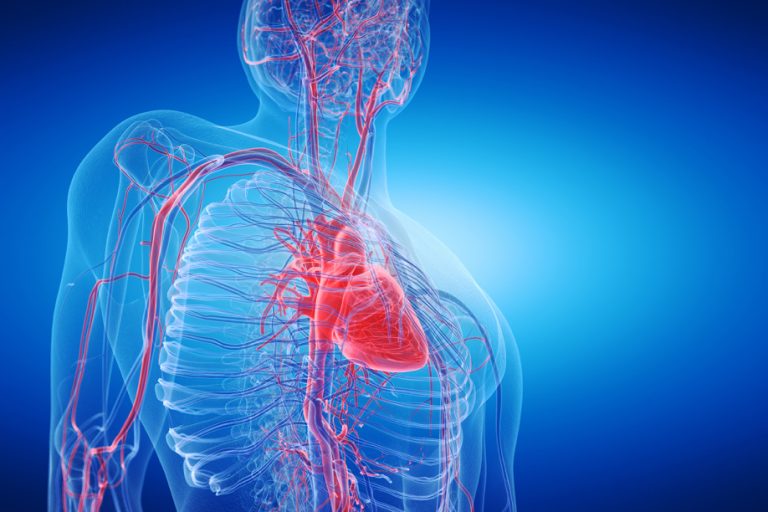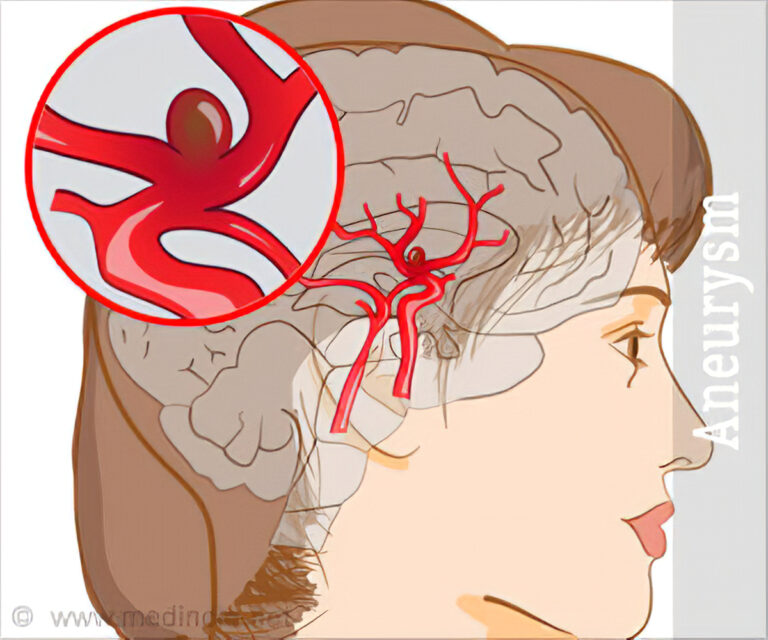Pulmonary Embolism: How serious it is
Author: Giselle Robel
Giselle Robel
Category: Health

Pulmonary embolism is a blockage in one of the pulmonary arteries in your lungs. In most cases, pulmonary embolism is caused by blood clots that travel to the lungs from deep veins in the legs or, rarely, from veins in other parts of the body (deep vein thrombosis).
Because the clots block blood flow to the lungs, pulmonary embolism can be life-threatening. However, prompt treatment greatly reduces the risk of death. Taking measures to prevent blood clots in your legs will help protect you against pulmonary embolism.
Pulmonary embolism includes sudden shortness of breath, pain in and around the chest, and coughing. Caused by a blood clot, a pulmonary embolism is a serious but very treatable condition if done immediately.
If a clot develops in a vein and stays there, it's called a thrombus. And if the clot detaches from the wall of the vein and travels to another part of your body, it's called an embolus.
Symptoms of Pulmonary Embolism
Pulmonary embolism symptoms can vary greatly, depending on how much of your lung is involved, the size of the clots, and whether you have underlying lung or heart disease.
Common signs and symptoms include:
- Shortness of breath
- This symptom typically appears suddenly and always gets worse with exertion.
- Chest pain
- You may feel like you’re having a heart attack. The pain is often sharp and felt when you breathe in deeply, often stopping you from being able to take a deep breath. It can also be felt when you cough, bend or stoop.
- Cough
- The cough may produce bloody or blood-streaked sputum.
Other signs and symptoms that can occur with pulmonary embolism include:
- Rapid or irregular heartbeat
- Lightheadedness or dizziness
- Excessive sweating
- Fever
- Leg pain or swelling, or both, usually in the calf caused by a deep vein thrombosis
- Clammy or discolored skin (cyanosis)
What Causes Pulmonary Embolism?
Pulmonary embolism may occur:
- When blood collects (or pools) in a certain part of the body (usually an arm or leg). Pooling of blood usually occurs after long periods of inactivity, such as after surgery or bed rest.
- When veins have been injured, such as from a fracture or surgery (especially in the pelvis, hip, knee or leg).
- As a result of another medical condition, such as cardiovascular disease (including congestive heart failure, atrial fibrillation and heart attack) or stroke.
- When clotting factors in the blood are increased, elevated, or in some cases, lowered. Elevated clotting factors can occur with some types of cancer or in some women taking hormone replacement therapy or birth control pills. Abnormal or low clotting factors may also occur as a result of hereditary conditions.
How is a Pulmonary Embolism Detected?
Pulmonary embolism is commonly detected through the following tests:
- Computed tomography (CT) scan.
- Lung scan.
- Blood tests (including the D-dimer test).
- Pulmonary angiogram.
- Ultrasound of the leg — helps to identify blood clots in patients who cannot have an X-ray due to dye allergies or who are too sick to leave their hospital room.
- Magnetic resonance imaging (MRI) of the legs or lungs.
Medical conditions and treatments
You’re at higher risk if you or any of your family members have had venous blood clots or pulmonary embolism in the past.
In addition, some medical conditions and treatments put you at risk, such as:
- Heart disease
- Cardiovascular disease, specifically heart failure, makes clot formation more likely.
- Cancer
- Certain cancers especially brain, ovary, pancreas, colon, stomach, lung and kidney cancers, and cancers that have spread can increase the risk of blood clots, and chemotherapy further increases the risk. Women with a personal or family history of breast cancer who are taking tamoxifen or raloxifene also are at higher risk of blood clots.
- Surgery
- Surgery is one of the leading causes of problem blood clots. For this reason, medication to prevent clots may be given before and after major surgery, such as joint replacement.
- Disorders that affect clotting
- Some inherited disorders affect the blood, making it more prone to clot. Other medical disorders such as kidney disease can also increase your risk of blood clots.
- Coronavirus disease 2019 (COVID-19).
- People who have severe symptoms of COVID-19 have an increased risk of pulmonary embolism.
Prolonged immobility
Blood clots are more likely to form during periods of inactivity, such as:
- Bed rest
- Being confined to bed for an extended period after surgery, a heart attack, leg fracture, trauma or any serious illness makes you more vulnerable to blood clots. When the lower extremities are horizontal for long periods, the flow of venous blood slows and blood can pool in the legs, sometimes resulting in blood clots.
- Long trips
- Sitting in a cramped position during lengthy plane or car trips slows blood flow in the legs, which contributes to the formation of clots.
Other risk factors
- Smoking
- For reasons that aren’t well understood, tobacco use predisposes some people to blood clot formation, especially when combined with other risk factors.
- Being overweight
- Excess weight increases the risk of blood clots particularly in people with other risk factors.
- Supplemental estrogen
- The estrogen in birth control pills and in hormone replacement therapy can increase clotting factors in your blood, especially if you smoke or are overweight.
- Pregnancy
- The weight of the baby pressing on the veins in the pelvis can slow blood return from the legs. Clots are more likely to form when blood slows or pools.
Who is at risk of developing a blood clot?
People at risk for developing a blood clot are those who:
- Inactive or immobile for long periods of time due to bed rest or surgery.
- Personal or family history of a blood clotting disorder, such as deep vein thrombosis (DVT) or pulmonary embolism (PE).
- A history of cancer or are receiving chemotherapy.
- Sit for prolonged periods.
People at risk for developing a pulmonary embolism include those who:
- Are inactive for long periods of time while traveling via motor vehicle, train or plane.
- Have a history of heart failure or stroke.
- Are overweight or obese.
- Have recently had trauma or injury to a vein, possibly after a recent surgery, fracture or due to varicose veins.
- Are pregnant or have given birth in the previous 6 weeks.
- Are taking birth control pills (oral contraceptives) or hormone replacement therapy.
- Placement of central venous catheters through the arm or leg If you have any of these risk factors and you have had a blood clot, please talk with your health care provider so steps can be taken to reduce your personal risk.
Complications
Pulmonary embolism can be life-threatening. About one-third of people with undiagnosed and untreated pulmonary embolism don’t survive. When the condition is diagnosed and treated promptly, however, that number drops dramatically.
Pulmonary embolism can also lead to pulmonary hypertension, a condition in which the blood pressure in your lungs and in the right side of the heart is too high. When you have obstructions in the arteries inside your lungs, your heart must work harder to push blood through those vessels, which increases blood pressure and eventually weakens your heart.
In rare cases, small emboli occur frequently and develop over time, resulting in chronic pulmonary hypertension, also known as chronic thromboembolic pulmonary hypertension.
Prevention
Preventing clots in the deep veins in your legs (deep vein thrombosis) will help prevent pulmonary embolism. For this reason, most hospitals are aggressive about taking measures to prevent blood clots, including:
- Blood thinners (anticoagulants)
- These medications are often given to people at risk of clots before and after an operation as well as to people admitted to the hospital with medical conditions, such as heart attack, stroke or complications of cancer.
- Compression stockings
- Compression stockings steadily squeeze your legs, helping your veins and leg muscles move blood more efficiently.
- They offer a safe, simple and inexpensive way to keep blood from stagnating during and after general surgery.
- Leg elevation
- Elevating your legs when possible and during the night also can be very effective. Raise the bottom of your bed 4 to 6 inches (10 to 15 cm) with blocks or books.
- Physical activity
- Moving as soon as possible after surgery can help prevent pulmonary embolism and hasten recovery overall.
- This is one of the main reasons your nurse may push you to get up, even on your day of surgery, and walk despite pain at the site of your surgical incision.
- Pneumatic compression
- This treatment uses thigh-high or calf-high cuffs that automatically inflate with air and deflate every few minutes to massage and squeeze the veins in your legs and improve blood flow.
Prevention while traveling
The risk of blood clots developing while traveling is low, but increases as long-haul travel increases. If you have risk factors for blood clots and you’re concerned about travel, talk with your doctor.
Your doctor might suggest the following to help prevent blood clots during travel:
- Drink plenty of fluids
- Water is the best liquid for preventing dehydration, which can contribute to the development of blood clots. Avoid alcohol, which contributes to fluid loss.
- Take a break from sitting
- Move around the airplane cabin once an hour or so. If you’re driving, stop every so often and walk around the car a couple of times. Do a few deep knee bends.
- Fidget in your seat
- Flex your ankles every 15 to 30 minutes.
- Wear support stockings
- Your doctor may recommend these to help promote circulation and fluid movement in your legs. Compression stockings are available in a range of stylish colors and textures.
- There are even devices, called stocking butlers, to help you put on the stockings.












